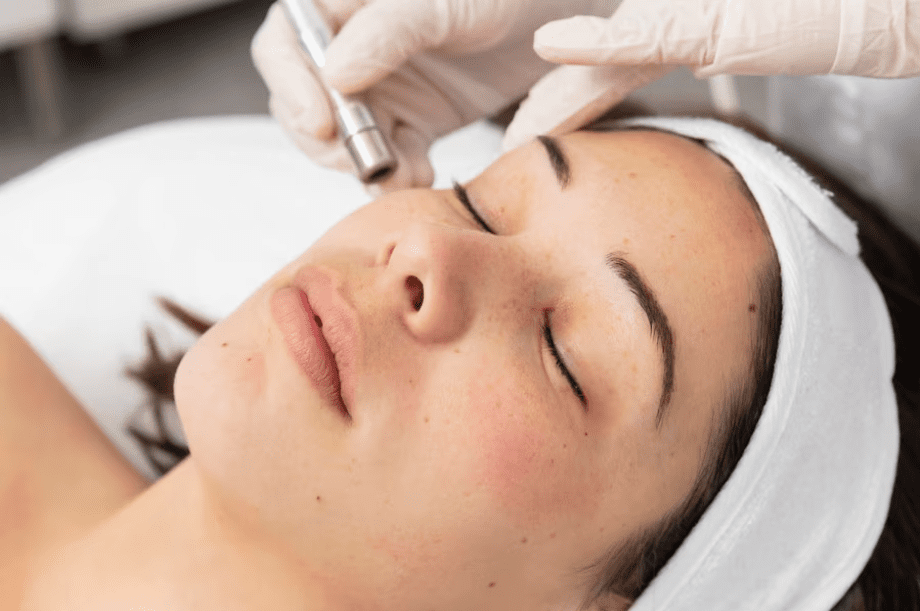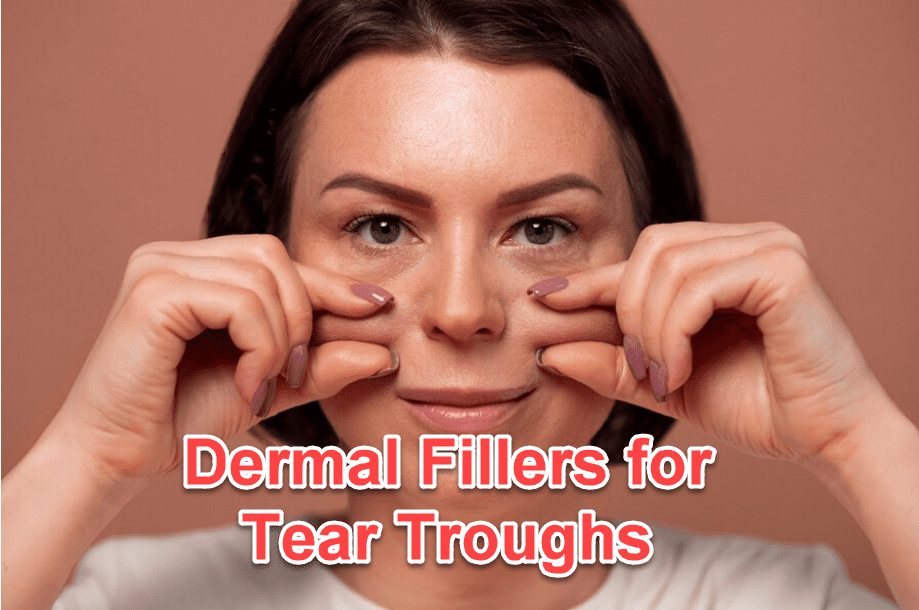Glowing, vibrant skin steals attention even with heavy makeup on. But how do celebrities and influencers get that camera-ready complexion regardless of acne marks, age spots, or wrinkles? What if regular people could freshen up dull skin without expensive creams or surgery? The good news is – now you can!
Two of the best treatments for reviving tired skin are microneedling and chemical peels. Like hair or nails, our skin loses its healthy look over time. However, new technologies can turn back the clock by boosting collagen and removing damaged skin layers on the surface.
Both microneedling and peels promise to give your skin an incredible glow. But what exactly does each one do? And what kinds of results can you realistically expect?
Read on for easy-to-understand facts on how microneedling and chemical peels refresh skin. We’ll compare the issues that each treatment works best for, the level of downtime, the number of sessions needed, the costs, and more.
You’ll learn everything you need to choose the best facial rejuvenation option for your personal glow-up goals.
What’s Microneedling
Microneedling therapies utilize teeny needles in an apparatus gliding over skin to create controlled micro-injuries barely into the epidermis.
These microscopic dots don’t visibly damage the surface but signal natural repair processes. Fresh collagen and elastin fibers build while new blood vessels grow to heal small wounds.
What Happens During Chemical Peels
Chemical peels apply alpha hydroxy acids (AHAs) like glycolic, lactic, or salicylic in varying concentrations.
These solutions initiate gentle, progressive shedding of damaged outer layers so vibrant skin underneath emerges. The “trauma” of removing unhealthy skin also stimulates collagen remodeling.
Microneedling vs Chemical Peels: What Works Best for Your Skin Concerns
If you feel your skin’s lost its glow due to issues like acne scarring, uneven pigment, fine lines, or enlarged pores, you’re not alone. But the good news is that microneedling and chemical peels offer two powerful ways to revive a dull, lackluster complexion.
Both of these advanced skin treatments promise glow-worthy improvements. But each one works differently and excels at treating different skin concerns.
Microneedling focuses mainly on boosting natural collagen production to smooth wrinkles and refine enlarged pores. The tiny needle pricks kickstart wound healing factors that build a new foundation under the skin, lifting depressions.
Chemical peels utilize alpha hydroxy acids to dissolve damaged surface layers so healthier skin underneath can shine through. The chemical exfoliation reveals improved texture and tone by removing discoloration.
Microneedling vs Chemical Peels: Key Differences
Now that we’ve covered the basics, let’s contrast the core differences between these glow-generating skin treatments.
| Aspect | Microneedling | Chemical Peel |
| Procedure | Involves using a device with tiny needles to create micro-injuries on the skin’s surface | Involves applying a chemical solution to the skin to exfoliate and peel off dead skin cells |
| Treatment Area | Can be performed on various areas of the body, including face, neck, and hands | Primarily used on the face but can also be applied to other body parts |
| Purpose | Stimulates collagen production, improves skin texture, treats acne scars, and reduces wrinkles | Exfoliates the skin, reduces age spots, improves skin tone, and treats acne |
| Downtime | Mild redness and swelling may occur for a few days after treatment | May cause redness, peeling, and sensitivity for a few days to a week |
| Recovery Time | Typically requires a few days for the skin to heal and regenerate | Skin may take a week or more to fully recover, depending on the depth of the peel |
| Results | Gradual improvement seen over several weeks to months with multiple sessions | Visible improvement in skin texture and appearance within a week after treatment |
| Pain Level | Can be performed on various areas of the body, including the face, neck, and hands | Sensations of tingling, stinging, or burning may occur during application. |
| Suitability | Suitable for various skin types and conditions, including sensitive skin | May not be suitable for individuals with certain skin conditions or allergies |
| Cost | Cost varies depending on the provider, location, and number of sessions needed. | Cost varies depending on the type of peel, provider, and location. |
As you can see from the table, microneedling and chemical peels differ fundamentally in how they incite improved skin quality and versatility in addressing specific skin concerns.
Now, let’s explore the results you can expect from each, plus combination approaches.
Microneedling Outcomes
Consider microneedling the ultimate anti-aging hero targeting these desired effects:
- Smoothing fine lines and wrinkles – Boosting natural collagen production plumps up creases from the inside out. Even shallow or difficult wrinkles around the eyes and mouth relax.
- Refining enlarged pores – Collagen buildup tightens pore walls, reversing that blotchy, spotty look.
- Balancing uneven pigment and tone – New capillaries enhance blood flow, reducing brown spots and redness. Skin looks noticeably brighter within weeks.
- Softening rough texture and scars – Physical exfoliation and collagen stimulation resurface uneven, crusty patches for incredible smoothness. Acne scars and stretch marks also improve.
Chemical Peel Results
Chemical exfoliants excel in achieving these complexion perfection goals:
- Minimizing fine lines and wrinkles – Removing spent, sunken surface layers lets fresh collagen emerge, plumping creases.
- Clearing acne congestion and breakouts – Dissolving debris inside clogged pores while regulating oil production prevents recurring acne.
- Restoring an even, glowing clarity – Getting rid of inherited discoloration, melasma, or liver spots, as well as overall skin tone and texture.
- Refining skin quality–Gentle acid exfoliation followed by hydrating antioxidants leaves all skin types ridiculously smooth, supple, and luminous.
What Gives Better Results, Chemical Peel or Microneedling
For overall skin rejuvenation, neither treatment clearly outweighs the other. Microneedling excels at smoothing wrinkles and shrinking enlarged pores by building new collagen below the surface.
Chemical peels refine texture and brighten skin tone by removing damaged outer layers so healthier skin emerges. Smart combination approaches leverage both mechanisms for unbeatable total facial revitalization.
Does Microneedling Make You Glow
Yes, microneedling restores glow by spurring natural wound-healing processes that stimulate collagen and elastin production. These proteins plump up depressions in aging skin, relaxing fine lines and wrinkles.
Boosting structural proteins also firms sagging areas. Improved tone and smoothness create a radiant, youthful glow.
Does a Chemical Peel Make You Glow
Chemical peels reveal glowing skin by shedding the uppermost damaged layers so vibrant, fresh skin comes through. Removing uneven pigment and dead cells creates an exceptionally clear, smooth texture.
Peels also refine pores, accelerate cell turnover, stimulate collagen, and deliver hydrating, antioxidant serums that are deeper and show luminous results.
How to Choose the Right Procedure for Acne
For maximum glow improvement, a customized blend targets your particular skin issues like acne, melasma or photodamage.
Shallower glycolic or lactic acid peels promote luminosity by accelerating cell turnover and gently exfoliating. Incorporating antioxidants, growth factors, and hydrators amplify and prolong brightening effects.
How Chemical Peels Treat Your Skin
Chemical peels utilize alpha hydroxy acids to initiate gentle, progressive shedding of spent, lackluster surface skin. This reveals the healthy, radiant skin layers below.
Improved tone and clarity result from removing uneven pigment, smoothing roughness, shrinking pores, increasing collagen, and delivering glow-getting antioxidants deeper.
Layering Microneedling with Chemical Peels
While microneedling and peels differ, substantially, smart providers increasingly layer both strategically. Pre-treating skin with gentle peels maximizes access to microneedling serums. Acid primers are post-microneedling that hasten dead skin shedding.
Custom combination approaches aim to capitalize on the collagen-boosting merits of microneedling with the resurfacing gifts of chemical peels.
Which Glow-Up Wins: Peels or Needling
Now for the big reveal – in the battle for the ultimate skin rejuvenation between microneedling and chemical peels, who emerges victorious? Drumroll…is it TeamPeel or TeamNeedle?
The envelope, please…The winner is…Both!
Turns out that comparing microneedling AND chemical peels misses the point entirely. These glow-getting treatments beautifully complement each other instead of competing.
Optimizing your aesthetic journey includes strategically layering the collagen-building capacity of microneedling with the complexion-refining gifts of customized chemical peels.
Rather than choosing one procedure, experiential providers like Dr. Lauren Nawrocki advocate maximizing your skin’s potential with the immense synergistic perks of blending both building blocks. Science confirms skillfully combining modalities outperforms a solitary approach alone.
Let’s not limit glow potential with false dichotomies. Open instead to receiving the cumulative strengths of peel AND needling pathways fused for unstoppable skin rejuvenation.
Takeaway
Rather than viewing microneedling and chemical peels as competing treatments, it’s best to see them as complementary therapies that work synergistically to reveal your skin’s full rejuvenation potential.
Strategically combining microneedling’s collagen stimulation with customized peels’ resurfacing capacities leverages the best of both techniques. Contact skin health expert Dr. Lauren Nawrocki at Green Relief Health in Baltimore for unbeatable facial renewal addressing your unique skin needs.
Schedule a personalized consultation to determine if layering these advanced modalities can help you achieve and maintain your ultimate skin goals.







